“WHAT I SEE IS A GLOBULAR FIGURE DRIPPING WITH EXCREMENT, COVERED IN EYES, STANDING IN A CAVE” – HAASIOPHIS (ANTEDILUVIAN)
The tumult, terror and transcendence of Antediluvian’s music is matched for sheer, naked potency only by the decadence, depravity and delirium of the accompanying artwork. Driven to abstraction, frontman Haasiophis, AKA Tim Grieco, is the tortured, twisted mind behind both media, which represent the audio and visual manifestations of his fragmented psyche. A uniquely-possessed / tormented musician and artist, Tim took a break from channelling the madness to field my questions about the creative process behind his instantly-recognisable artwork; the importance of relevant, intrinsically-valuable imagery as a companion piece to quality Black Metal; the contradictory richness of monochrome etching; and, of course, the forthcoming, third Antediluvian full-length.
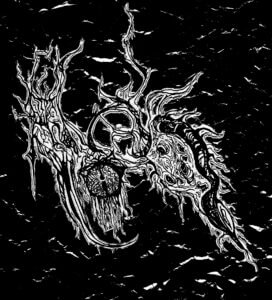 It was Iron Maiden’s ‘The Number Of The Beast’ that did it for me. Even though it was nearly 40 years ago and I was just a child, I remember clearly standing in a music shop gazing with wonder, enchanted by the cover artwork. It looks cartoonish now but, at the time, it was terrifying. I was hooked and had to get that album. Without doubt, it was the power of Derek Riggs’ iconic, beastly puppeteer painting that drew me in. Unsurprisingly, the music and lyrics matched the imagery and my love of Metal music had begun. Around that same time, the first two Death albums, ‘Scream Bloody Gore’ and ‘Leprosy’, also made a big impression on me – as have countless others since. In Metal, perhaps more so than any other genre or subgenre, the artwork and the music almost invariably go hand in hand, complementing one another as part of the same vision. Can you remember if there was a particular cover image that first captured your imagination?
It was Iron Maiden’s ‘The Number Of The Beast’ that did it for me. Even though it was nearly 40 years ago and I was just a child, I remember clearly standing in a music shop gazing with wonder, enchanted by the cover artwork. It looks cartoonish now but, at the time, it was terrifying. I was hooked and had to get that album. Without doubt, it was the power of Derek Riggs’ iconic, beastly puppeteer painting that drew me in. Unsurprisingly, the music and lyrics matched the imagery and my love of Metal music had begun. Around that same time, the first two Death albums, ‘Scream Bloody Gore’ and ‘Leprosy’, also made a big impression on me – as have countless others since. In Metal, perhaps more so than any other genre or subgenre, the artwork and the music almost invariably go hand in hand, complementing one another as part of the same vision. Can you remember if there was a particular cover image that first captured your imagination?
“In fact, when I was young, it was the Iron Maiden covers that really stood out to me. The grotesque and sort of over-the-top graphic, colourful violence of these images went a long way to impress my young eyes. A little later, after that, it was definitely Slayer’s art that made a huge impression, it seemed even more shocking and transgressive. After that, Vincent Locke’s Cannibal Corpse covers … a whole other level.”
Do you feel that with the demise of physical music shops and the dawning of this anonymous new age of hurried, impatient online consumerism that the pivotal role of artwork in luring the potential listener in (and its impact on the audience) has been diminished somewhat? Is there a counter to this in that covers can no longer be used for cynical marketing or promotional purposes but instead reflect a genuine artistic expression?
“I think that with record albums, digital presentation vs in person presentation, there’s not much difference. A good piece of art will still get the viewer’s attention. Maybe slightly better in person, but still effective if the label knows how to do graphic design and makes some good, visually-stimulating promotional graphics. The real problem is oversaturation in general of all styles. There is a lot of schlock to sift through to find good releases. Of course the best bands always have great music and great graphics – innovative, eye catching, a little out of left field, that’s the way to do it.”
While accompanying artwork has always been somewhat important in all styles of music – including pop, rock, country, rap, etc. – it seems to me that more-mainstream covers are almost random and hastily-chosen much of the time; often an afterthought or crass attention-seeking exercise whereas, within Black Metal and Death Metal, the imagery tends to be much more specific and focussed. There are always exceptions but, without meaning to make sweeping generalisations, you can often tell intuitively and with a great deal of accuracy what the album in going to sound like by examining the front-cover image. By and large, the best and most authentic Black Metal bands / individuals seem to value the use of genuine, original art – often drawn, commissioned or sourced exclusively. From the outside looking in, it feels like this is a respected and intrinsic element in the underground, every bit as valuable and vital as the music itself. As both a musician and an artist, is this something you respect / admire (particularly regarding those who get it right … I’m sure you see plenty of sacrilege all around, too)?
“I agree with pretty much everything you say here. As I said, bands with solid values and artistic integrity usually do it right.”
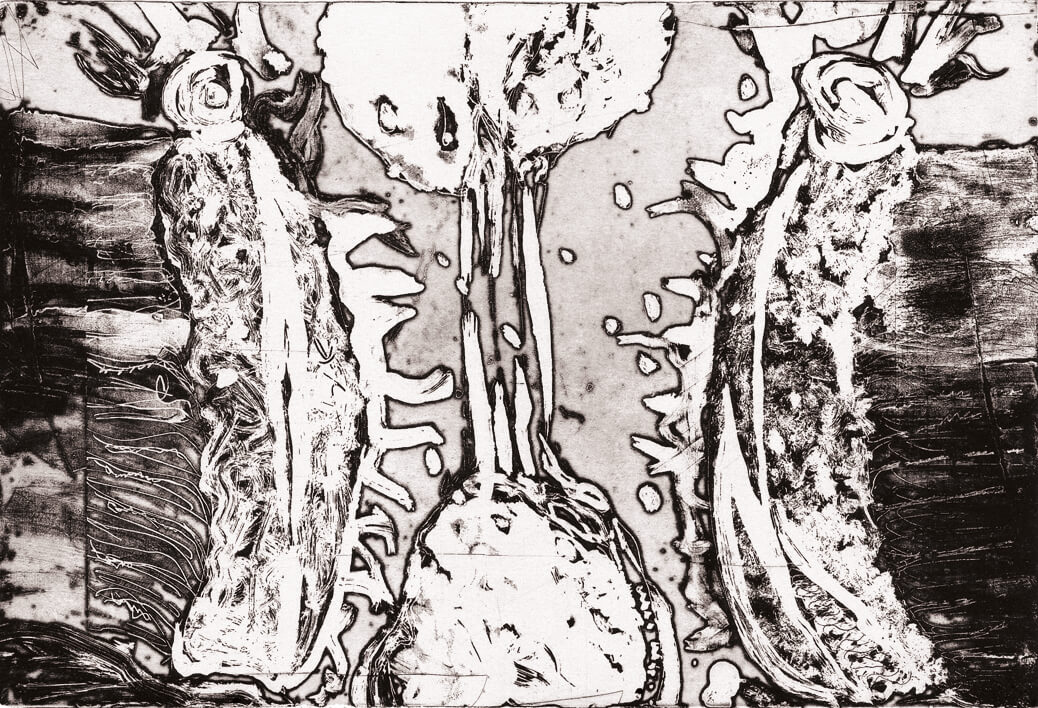
Your music [Antediluvian, explicitly] and your art are coming from the same chaotic, fragmented source, both of them wholly intangible, immaterial and abstract. One is a visual expression of your psyche, the other an audio presentation. Together, they form a complete primal package. Naturally, you handle all the artwork for Antediluvian and the other musical projects you are involved in. I’m curious as to the chronological order of how things come together… do the music and the art ever enter into your mind simultaneously like some vast 4D vision or does one tend to follow the other? Such creative multi-tasking must bring immense pressure. Are you a tortured, stressed artist (the art suggests this) or are you sometimes calm and content whilst working?
“I definitely feed torture and stress into my work but in a very economical and contained way. I don’t waste energy with drama and unnecessary venting, just get busy and focus and manifest the madness. Usually the music comes first and the art comes when I start thinking about the lyrics, concepts and ideologies I choose to pair with the sounds.”
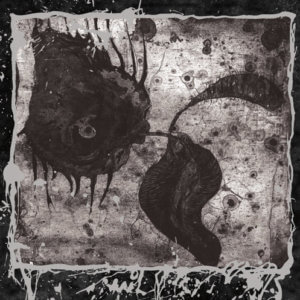 As someone whose interest in art goes no further than what I see on the covers of my records, I find your decadent artwork incredibly mysterious and puzzling yet absolutely fascinating at the same time. ‘Through The Cervix Of Hawaah’ is one of my all-time favourites. The image on the front of the gatefold vinyl is stunning, but when I look at it I have no idea what it represents – apart from being dark and disturbing. It seems to speak on a subliminal level. Looking right now, upside down, I think I can observe a head with matter or material flowing from it. Is there a tongue there? Other organs? The deeper meaning will never be revealed to me. Is instilling and maintaining mystery an important consideration for you?
As someone whose interest in art goes no further than what I see on the covers of my records, I find your decadent artwork incredibly mysterious and puzzling yet absolutely fascinating at the same time. ‘Through The Cervix Of Hawaah’ is one of my all-time favourites. The image on the front of the gatefold vinyl is stunning, but when I look at it I have no idea what it represents – apart from being dark and disturbing. It seems to speak on a subliminal level. Looking right now, upside down, I think I can observe a head with matter or material flowing from it. Is there a tongue there? Other organs? The deeper meaning will never be revealed to me. Is instilling and maintaining mystery an important consideration for you?
“It’s an abstract version of a disembodied vagina and a womb. The womb looks like a face and they are both kind of floating in amniotic fluid. It’s meant to seem both spiritual and biological, a petri dish under an electron microscope perhaps. At that scale it also has an inhuman quality, almost reptilian. It should evoke feelings of familiarity and strangeness at the same time, in order to get across that ‘through the cervix’ something transgressive is taking place.”
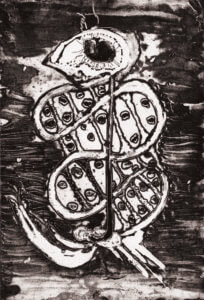 I read that you like to combine elements of abstraction and elements of realism together to prompt the mind to spin in various directions at once. But I wonder is there great mystery there for you, the artist, as well? I would assume that sometimes you have a clearer vision in your mind of what you are attempting to create than other times. Thus, regarding those ‘other times’, where the work isn’t premeditated but interpreted retrospectively, if there is significantly more abstraction than realism and the unconscious mind has taken over, do you become a conduit for something that is even beyond your own (complete) understanding? Like an artistic version of psychography? You have the perfect end result in front of you, but it is also a mystery to you…
I read that you like to combine elements of abstraction and elements of realism together to prompt the mind to spin in various directions at once. But I wonder is there great mystery there for you, the artist, as well? I would assume that sometimes you have a clearer vision in your mind of what you are attempting to create than other times. Thus, regarding those ‘other times’, where the work isn’t premeditated but interpreted retrospectively, if there is significantly more abstraction than realism and the unconscious mind has taken over, do you become a conduit for something that is even beyond your own (complete) understanding? Like an artistic version of psychography? You have the perfect end result in front of you, but it is also a mystery to you…
“Yes. This is a perceptive and accurate way to sum things up. When I plan less, something from beyond takes hold and I know what to do even though I don’t know what I’m doing as far as results are concerned. I just let it happen and it comes out how it comes out.”
When you are commissioned to do artwork for another band, presumably they will have some idea in their mind as to what they want, albeit still within your distinctive abstract style? Looking at work you have done for bands like Malthusian (‘Across Death’), Vassafor (‘Obsidian Codex’) and Uškumgallu (‘Rotten Limbs In Dreams Of Blood’), there appears to be more substance and clarity than abstraction. Then again, there are others where the images are quite abstract and more open to interpretation (such as Ill Omen’s ‘Remnant Spheres of Spiritual Equilibrium’ and Temple Nightside’s ‘Condemnation’). So I’m guessing it depends on how specific the brief is? And I believe you seek as much direction as possible from the party you are working for? (Although, at the same time, I imagine most of these clients are very familiar with your work and are seeking a Tim Grieco original and will afford you a large degree of artistic freedom.)
“Yes, I follow the instructions and sometimes there are more details given, sometimes there are less. Listening to the music helps. Sometimes I see pictures when I close my eyes, or again just know what to do and let it happen.”
Etching appeals because it allows for a visual aesthetic that is unique and unattainable with other formats
Sticking with commissions briefly, you prefer to only work with bands who interest you and naturally it’s important to create a piece of art that ties in with their vision, lyrics and / or music. The art should complement the music but, at the same time, should not play second fiddle to it. You are on record as saying that each piece should be able to stand on its own, otherwise it is “devoid of valuable intrinsic properties”. It’s clearly vitally important that you can stand over every piece of art you produce, be it commissioned or for one of your own records?
“I am unable to make something that isn’t intrinsically valuable. That means if you didn’t know it was a commission, you’d still think I made it with purpose just to exist for what it is. It has to do with my integrity and my commitment to make the best use of my abilities.”
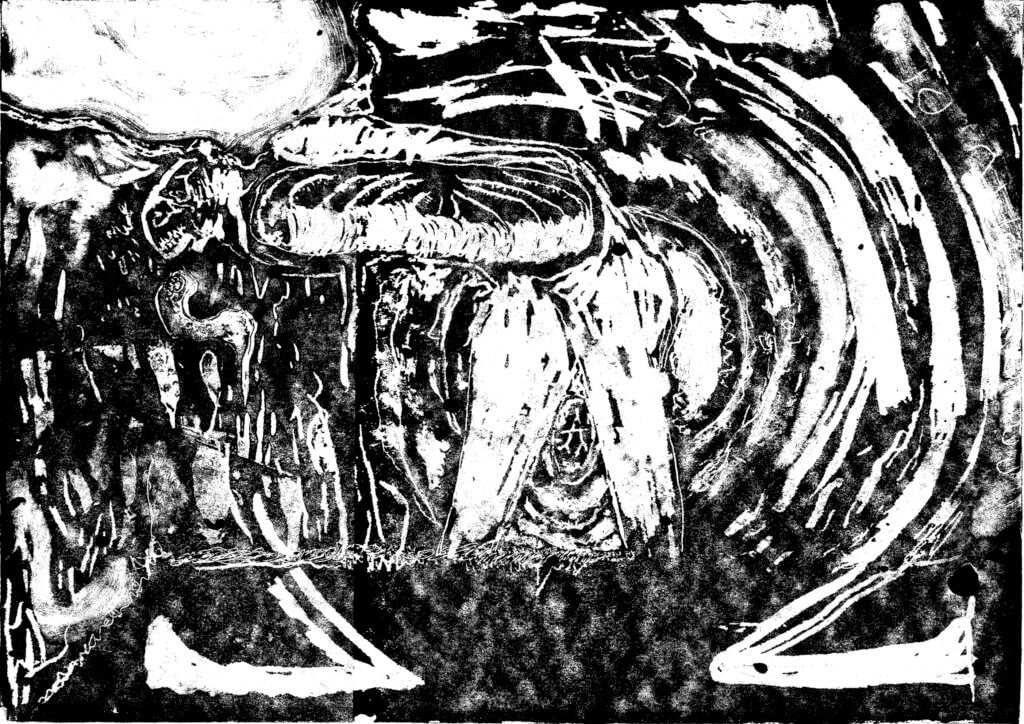
You have used ink wash, monoprint with ink, acrylic paint and watercolour but copper plate etching is your preferred form of expression. Art is extremely difficult, highly-skilled and specialised at the best of times but copper plate etching looks particularly painstaking and time consuming. What is it about this process and the end result that appeals to you so much? I like how your images are monochromatic yet conversely vibrant and rich… Somehow you manage to channel more detail (and awe) into black, white and grey than what others can convey using a full spectrum of colours. Why do you prefer to work in monochrome (is that the correct term?) or limited colour ranges? Is it a restriction that comes with copper plate etching, a reflection of your psyche, or a bit of both? Also, are the materials used in the creation of an image as important as the actual image itself?
“Etching appeals because it allows for a visual aesthetic that is unique and unattainable with other formats. The pieces I make look simultaneously like drawings and photos. This I find intrigues the mind in an unmatched way. The way intaglio printmaking works is the artist makes a void in the plate, and then the void is filled with ink, and transferred to paper. This means what we end up seeing is a physical impression of a void. Almost sounds paradoxical but of course it’s not. Technically speaking, with etching you use one colour of ink. You can add more colour but it complicates the process, which was invented hundreds of years ago as a way to make monochrome analog duplicates (before people had any idea what digital was). With digital your spectrum of tone is finite. With analog it is unlimited, somehow this richness translates even when you see a digital photo of an etching. The materials are what make the image, you can’t have one without the other so I think each aspect is as important as the other.”
The painting you did for the new Utzalu LP, ‘The Grobian Fall’, is perhaps an outlier in that it is quite colourful. I’m also sure there are brush strokes on there, so it’s an actual painting? Why did you decide to paint that one?
“Here are the instructions the band gave me by email: “For this one, I was hoping to kind of do something in the theme of the Idiot by Dostoyevsky. Was thinking of like a central body or figure in tethered clothes kind of falling into the environment in the back. Could definitely be as abstract as always with your interpretation.” I have never ready Dostoyevsky but I think this worked out rather well nonetheless. I realized after that it also mirrors the imagery found on (0) the first card in the major arckanum of the tarot, hence I titled it The Fool. This is an oil painting, which I have been experimenting with more lately.”
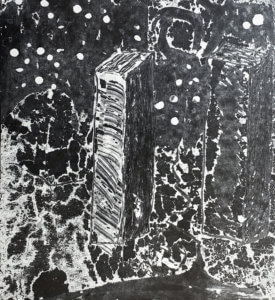 I’ve noticed an uncannily large number of musicians who are also talented artists. It can’t be coincidence. Isn’t it strange how these two gifts seem to overlap so often? Do you have any theories as to why so many musicians are also able to draw, paint, etch or tattoo? Is it simply that the same creative part of the brain is responsible for music and art?
I’ve noticed an uncannily large number of musicians who are also talented artists. It can’t be coincidence. Isn’t it strange how these two gifts seem to overlap so often? Do you have any theories as to why so many musicians are also able to draw, paint, etch or tattoo? Is it simply that the same creative part of the brain is responsible for music and art?
“In my spheres (of people I have actually met), I actually have not really observed this. Most people can only do one or the other. I can think of one exception at the moment. I do think that the creative brain can work well with different mediums. But many musicians and artists are not truly creative. They are just going by numbers so to speak, and comfortable in their acceptable ruts.”
It’s been seven years since the sophomore album, ‘λόγος’, so it’s great so see some new Antediluvian material available. ‘Defleshing The Serpent Infinity’, a split MLP with Heresiarch, was released by Iron Bonehead Productions last month. Antediluvian contributes one track of primitive, chaotic, subterranean Black Metal destruction (‘Slipstream of Leviathan’s Wake’) followed by a suitably unsettling ambient offering, tantalising entitled ‘Prelude…’. Is this a hint that perhaps the long-awaited third full-length might be imminent? Has the lengthy wait happened by accident or design?
“The wait was due to the fact that in January of 2013 Mars, the drummer, moved to Austria. We had just finished recording ‘LOGOS’ and ‘Septentrional Theophany’ together the previous summer and both were set to release shortly. At that point we had composed over 40 songs and had been rehearsing at least three times a week on average since 2005. We took a break then slowly started working on new music, and figuring out how to make songs without being able to play together in person. The reason for the gap was due to this much-needed break and the learning curve for working long distance. The first song we finished was ‘Slipstream of Leviathan’s Wake’, intended for this split with Heresiarch. For the split, both bands decided to add a dark ambient track to close our respective sides. I called ours ‘Prelude…’ because the song ‘Slipstream of Leviathan’s Wake’ is about psychic time travel, accessing the eternal aspects of the self that exist outside what we think of as linear reality and influencing the past from the future. At the time of typing this (August 2020), our third full-length is about to be recorded, with plans for release in first quarter 2021.”
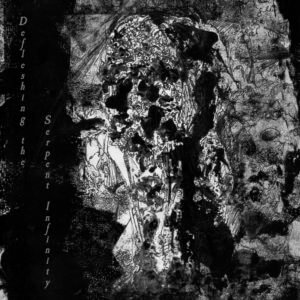 Again, the artwork is mind-blowing but elusive. I’m seeing two skulls on the right-hand side and can almost detect a fractured figure being crucified on an inverted cross on the left but, right way up, the head looks like a hooded figure carrying a shovel. However, all is being consumed by the swirling chaos, like existence itself, matter being consumed and becoming immaterial… Even though there’s no colour, it also looks like there’s some blood spattered onto the image as well as ink? Is this possible? Can you provide any further insight into this cover? What is that upside-down figure (or figures)? Are they there at all? Is there any broad meaning to this cover that you can reveal or are you happy to leave it open to individual interpretation?
Again, the artwork is mind-blowing but elusive. I’m seeing two skulls on the right-hand side and can almost detect a fractured figure being crucified on an inverted cross on the left but, right way up, the head looks like a hooded figure carrying a shovel. However, all is being consumed by the swirling chaos, like existence itself, matter being consumed and becoming immaterial… Even though there’s no colour, it also looks like there’s some blood spattered onto the image as well as ink? Is this possible? Can you provide any further insight into this cover? What is that upside-down figure (or figures)? Are they there at all? Is there any broad meaning to this cover that you can reveal or are you happy to leave it open to individual interpretation?
“The front cover image was done with smearing ink on cotton rag paper, using a roller and some pigment liners to add more detail. What I see is a globular figure dripping with excrement, covered in eyes, standing in a cave. I made several sketches based on biblical themes at this time, this one was kind of reminiscent of the presence of God – except God of course is an absurdity – covered in eyes and excrement, watching his creation from the shadows. The poster art included with the LP is a rendition of the famous Gustav Dore’s version of Leviathan as described in the Book of Job.”
It feels like the world has been turned upside-down since the outbreak of the so-called novel coronavirus pandemic earlier this year. A lot has changed. How has this turmoil affected you? Have you been able to find time and motivation to get creative, musically and with your art? And, finally, are you concerned at all about the future of live gigs or are you confident that they will inevitably return?
“In early 2020, I was working three part-time jobs at three live music venues so I was laid off and received a government subsidy. I immediately upped my rehearsal time, doing three Antediluvian practices, two Black Death Cult practices and two Revenge practices per week. I also started putting more energy into a small label / distro I have run for many years, Serpents Head Reprisal. In addition to all this, I started spending three four-hour shifts per week in the local printmaking studio working on etchings. Suffice to say, in regards to my creative pursuits, I’ve been the busiest and most productive I have in years. It has been an opportunity to really throw myself into my work without any distractions and I think it will pay off immensely. I’m not overly concerned about live gigs as it is something I enjoy but not the main reason I do music. For me, it’s song writing, researching for lyrics and doing art to accompany the songs and, like I said, I now have more time for all that – in fact, I’m quite appreciative that things have gone as they have and I hope they continue. Yes, I do see live music happening again sometime, and when it does, I’ll be more ready than ever before to unleash.”
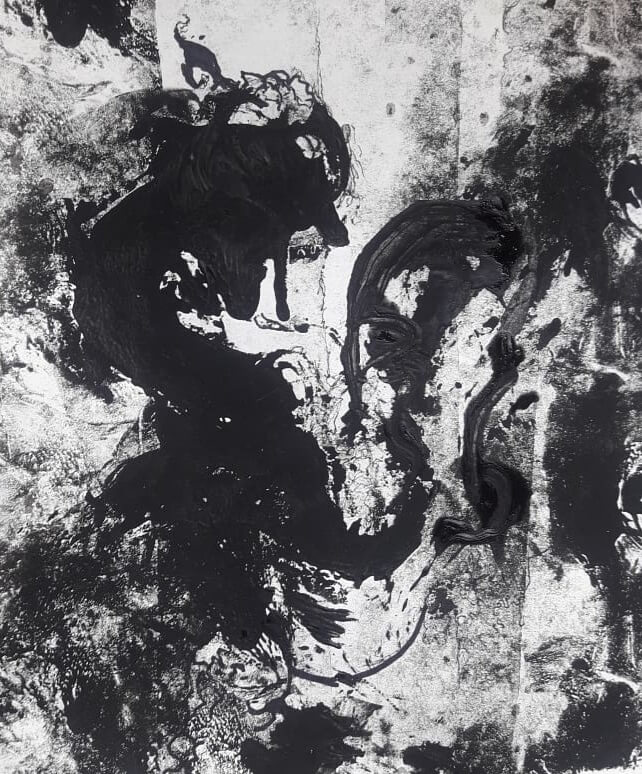
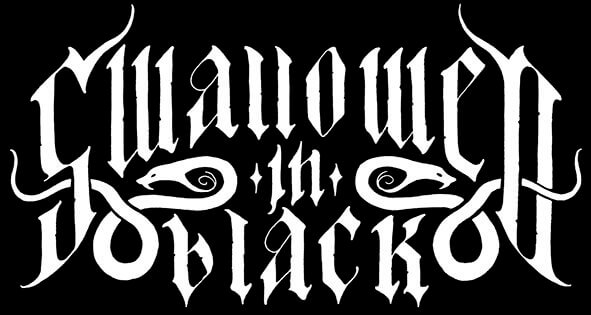
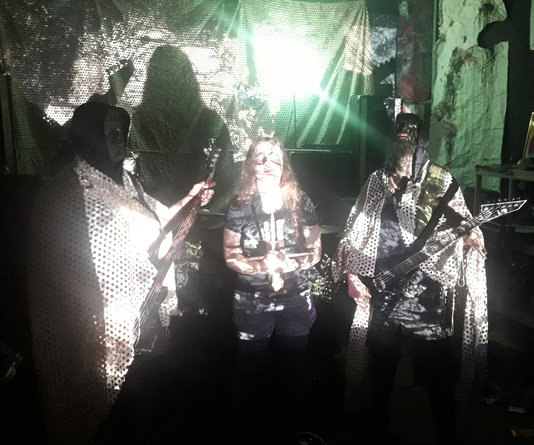
Pingback: BLACK DEATH CULT – DIASPORA LP (Profound Lore Records) - Swallowed In Black